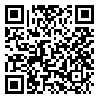Volume 7, Issue 4 (9-2020)
jbrms 2020, 7(4): 4-11 |
Back to browse issues page
Download citation:
BibTeX | RIS | EndNote | Medlars | ProCite | Reference Manager | RefWorks
Send citation to:



BibTeX | RIS | EndNote | Medlars | ProCite | Reference Manager | RefWorks
Send citation to:
Nasiri Onaki M, Ghahramani M. New aspects of cellular adaptation in physical activity: A delayed muscle pain approach. jbrms 2020; 7 (4) :4-11
URL: http://jbrms.medilam.ac.ir/article-1-443-en.html
URL: http://jbrms.medilam.ac.ir/article-1-443-en.html
Department of Exercise Physiology, Gilan-E-Gharb Branch, Islamic Azad University, Gilan-E-Gharb, Iran , mehran.physiology@gmail.com
Abstract: (4064 Views)
The purpose of the present study was to investigate the context of new aspects of cellular adaptation in physical activity with a focus on delayed pain approach, the nature and types of pain, several preventive and non-pharmacological approaches to delayed onset muscle soreness (DOMS) and to achieve a desirable conclusion and provide more relevant information from previous research. In this study, articles were searched in specialized databases and 30 related articles were selected based on inclusion and exclusion criteria, and cellular adaptation in physical activity with a focus on delayed muscle pain approach was investigated. Mechanical and metabolic stress is the cause of injury during participation in an unfamiliar activity. Mechanical and metabolic stress may trigger pathological responses to activity-induced muscle damage. The suggested cause of metabolic muscle injury has been the inadequate production of mitochondrial ATP, ischemia, hypoxia and changes in ion concentration. The present study showed that physical activity is, in general, among the methods that can be effective in the prevention and treatment of delayed muscle soreness including: massage, cryotherapy, hydrotherapy, use of nonsteroidal anti-inflammatory drugs, antioxidant use, warm-up and cool-down, stretching movements before and after the activity, avoiding new and unfamiliar activities, starting activities gradually and lightly. Resistance activity causes muscle damage by increasing creatine kinase enzymes, lactate dehydrogenase. Accordingly, resistance training, especially extracorporeal contraction, produces oxygen-free radicals and lipid peroxidation, eventually leading to muscle tissue damage and subsequent inflammatory processes.
Type of Study: Narrative review |
Subject:
Physiology
Received: 2019/08/18 | Accepted: 2019/11/5 | Published: 2020/09/30
Received: 2019/08/18 | Accepted: 2019/11/5 | Published: 2020/09/30
Send email to the article author
| Rights and permissions | |
 |
This work is licensed under a Creative Commons Attribution-NonCommercial 4.0 International License. |





